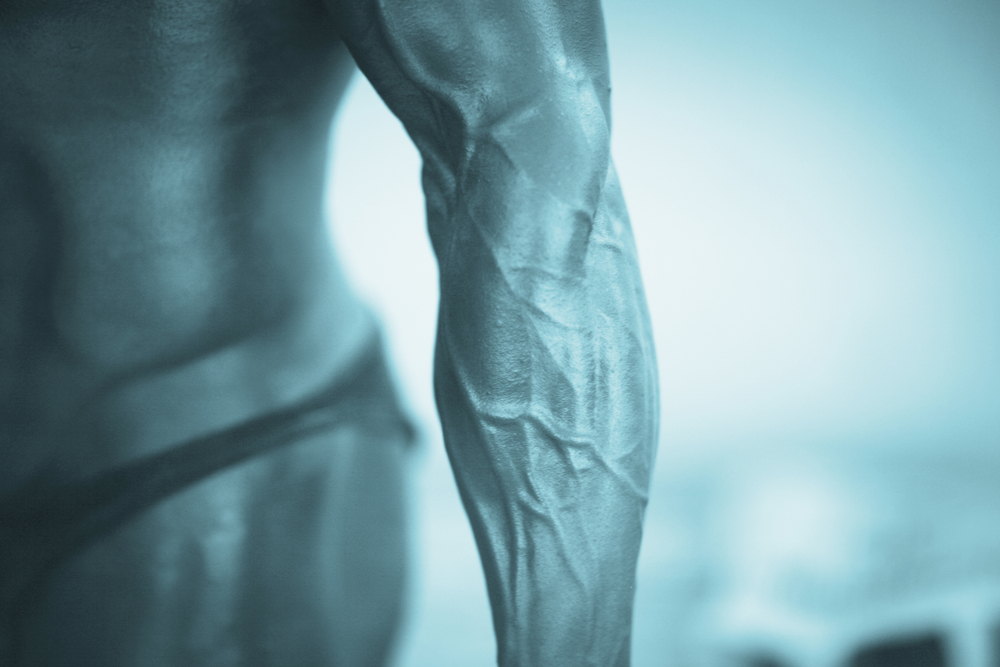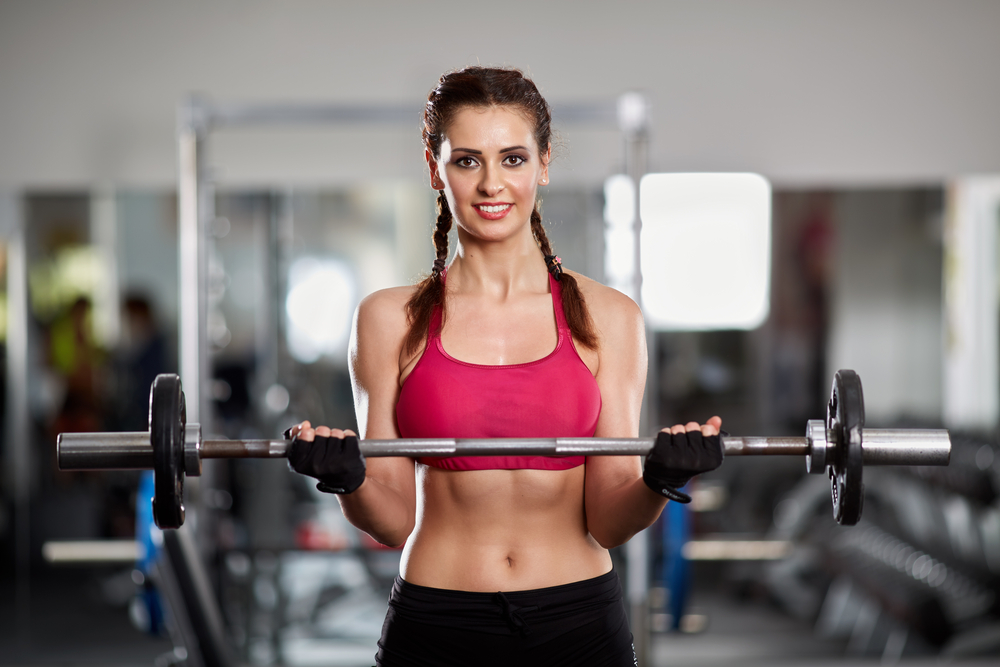Building big muscular arms is the goal of many gym-goers all over the world.
As important as your biceps and triceps are for arm size and strength, your forearms also play an important role in making your arms look well-defined and muscular.
Barbell curls are known for being an effective bicep-building exercise, but could they also work your forearms and help add size to them too?
In this article, we look into the effect barbell curls have on your forearms, as well as other reasons why your forearms might hurt during and after the exercise.

Do Barbell Curls Work Forearms?
Barbell curls are an isolation exercise that target the biceps.
While your biceps are the primary muscle group working during barbell curls, your forearms and shoulders act as secondary muscle groups.
This results in your forearms being placed under some level of stress throughout the exercise. If a muscle is under stress, it’s working and can benefit from the exercise being performed.
Why Barbell Curls Are Good For Forearms
Any muscle that activates during exercise will get some kind of benefit.
The primary muscles being worked in barbell curls are the biceps. That doesn’t mean your biceps are the only muscles working during the movement though.
Your forearms act as secondary stabilizing muscles during barbell curls.
As they’re forced to activate throughout the exercise, your forearms are worked along with your biceps, shoulders, and other smaller secondary muscles.
How To Target Forearms More During Barbell Curls
There are a couple of ways that you can adapt barbell curls to target your forearms more:
- Overhand grip
- Barbell wrist curl
Overhand Grip Barbell Curls
Overhand grip barbell curls change your hand position on the bar. Rather than holding the bar with your palms facing up, they face down towards the floor.
This position puts your biceps in a weaker position during the exercise.
As your biceps are unable to move as much weight when using an overhand grip, more emphasis is placed on your forearm muscles resulting in them having to work harder.
Overhand barbell curls predominantly work your brachioradialis.
This is the muscle on the thumb side of your forearm. The muscles on the other side of your forearms also come into play making the exercise very effective at building strong forearms.
Barbell Wrist Curls
Barbell wrist curls target the muscles in your forearms responsible for flexing your wrist and closing your hand.
As its name suggests, the exercise involves moving a barbell using only your wrists. There are several variations of barbell wrist curls but a basic explanation of how to do them is:
- Sit on a flat bench
- Hold your barbell using an underhand grip (palms up)
- Rest your forearms on your thighs
- Using your wrists, curl the weight upward towards you
- Extend your wrists to lower the weight
- Repeat for the desired number of reps and sets
You could also do barbell wrist curls with your forearms resting on a bench instead of your thighs.
An overhand grip can also be used to further target your forearm muscles.
Why Some People Get Sore Forearms During Barbell Curls
There could be a number of reasons why you get sore forearms during barbell curls.
Two of the most common reasons are that your technique is not completely correct or your forearm muscles are tight or tense.
Incorrect technique can cause soreness in any exercise and barbell curls are no exception.
Even small errors in technique can cause discomfort and soreness, so it’s important you keep the weight you are lifting light until you have fully mastered the technique.
Having tight or tense forearm muscles can also result in soreness during barbell curls. When performing the exercise, the working muscles contract. If they already have any tightness or tension within them, this will increase during the movement.
Any tightness during exercise can trigger pain receptors in our brains which is why you can sometimes feel sore during barbell curls.

Why Some People Get Sore Forearms After Barbell Curls
Weak forearms can lead to soreness after barbell curls.
Even though your forearms are secondary muscles during a barbell curl, they still activate and have stress placed on them during the exercise.
If your forearm muscles are weak in comparison to other muscles used in the movement, they can feel extra sore afterward.
Another thing to think about is whether your technique is correct or not. As previously mentioned, the technique is extremely important so a slight mistake can result in pain through your forearms.
If you think your forearms are strong enough to handle the weight being lifted, and your technique is perfect – you should consider that you may have an injury that is causing soreness during barbell curls.
Anything more than mild discomfort during exercise could be something to get checked out by a doctor.
Exercise shouldn’t cause severe pain.
You will likely feel slight soreness and tightness in working muscles for a few days after your workout. This should never be painful or prevent you from doing the things you need to do though.
Anything more than that and you should speak to a doctor to rule out any potential injuries.
Do Reverse Barbell Curls Work Your Forearms?
Yes.
As your biceps are placed in a weaker position, your forearms work hard during reverse barbell curls.
While biceps and shoulders still play a part in the exercise, your forearms will benefit more from reverse curls than standard underhand grip barbell curls.
Other Exercises That Work Your Forearms
Preacher Curls
If you’re feeling preacher curls in your forearms, it’s likely due to your forearms supporting your wrists during the curling motion.
Hammer Curls
On their own, hammer curls may not be enough for your forearms, but they can certainly help them grow.
Hammer curls are a great overall arm builder so I recommend you include them in your arm workouts.
Wrist Curls
These are probably my favorite forearm-specific exercise.
The key for getting the most out of wrist curls is to do a high number of reps and embrace the burn!
Chin-Ups
Since your forearms are needed to support your hands and wrists as they’re holding on to the bar, chin-ups work your forearms effectively.
Sources
I’ve been in the fitness and strength training industry for nearly a decade. In that time, I’ve gained 30 pounds of muscle, written hundreds of articles, and reviewed dozens of fitness supplements. As for my educational background, I’m a currently studying for my Active IQ Level 3 Diploma in Personal Training.

